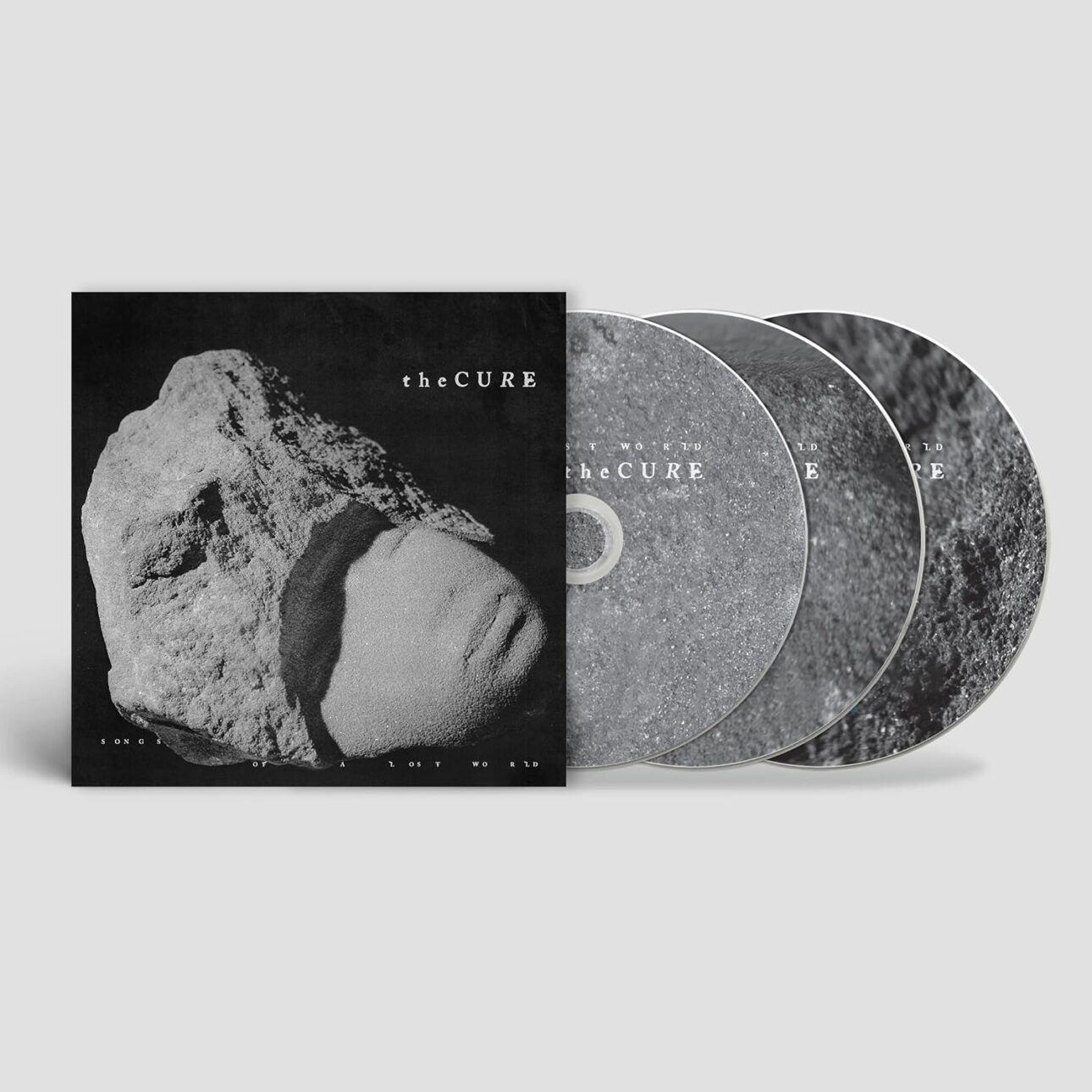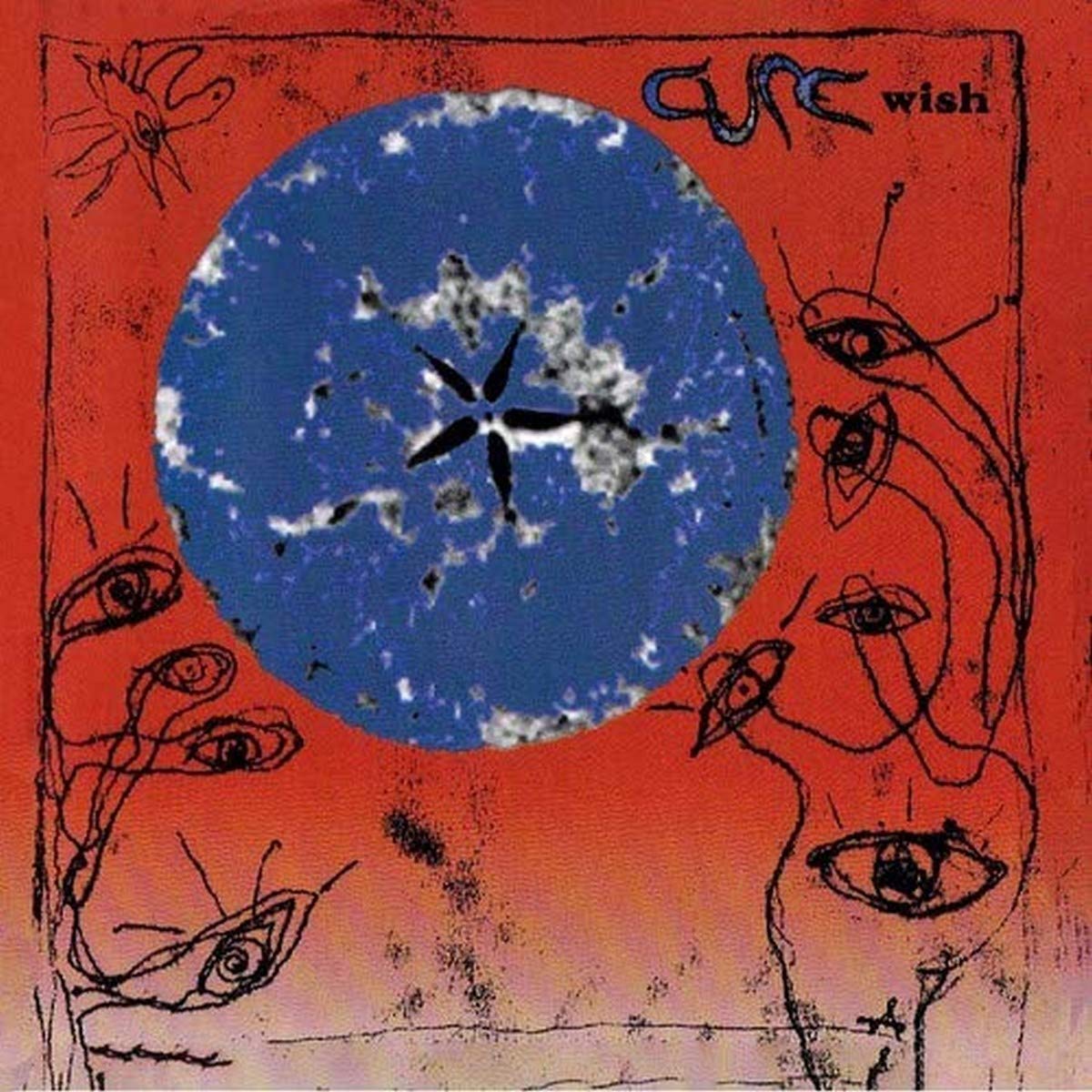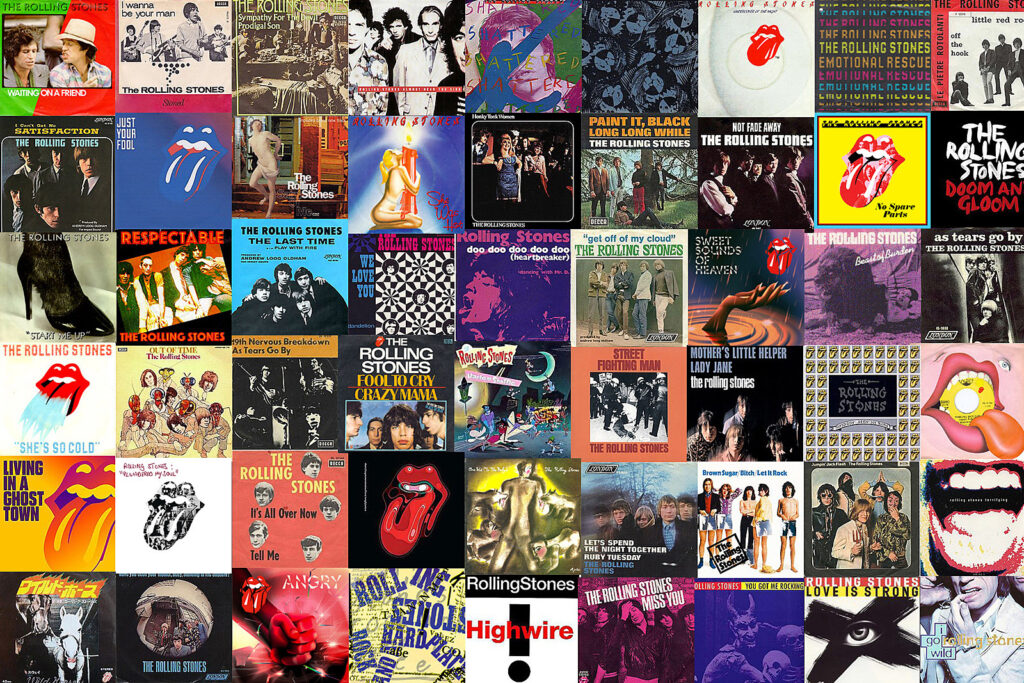Every Cure Album, Ranked

Robert Smith has been the only consistent member of the Cure since the band formed in 1978, and he’s an icon in his own right. Smith’s massively teased out black hair and red lips, and the inimitable pout and wail of his voice, make him as instantly recognizable as any frontman in alternative rock. The Cure—as a band, as a sound, as a concept—is bigger than the sum of its parts, even as its songs remain largely an expression of all of Smith’s passions and moods, from depression to infatuation.

Smith formed a band in Crawley with Notre Dame Middle School friends including drummer Lol Tolhurst and bassist Michael Dempsey in the mid-’70s to cover their favorite Bowie and Hendrix songs. By 1978, they’d changed their name from Easy Cure to simply the Cure, and had begun writing their first classic songs, including “Boys Don’t Cry” and “Killing an Arab” (later renamed “Killing Another”). The Cure’s lineup remained in flux for years as Smith shifted the band’s sound from post-punk to goth to tuneful pop/rock, eventually writing massive Top 40 hits like 1987’s “Just Like Heaven” and 1992’s “Friday I’m in Love.”
Over the years, Smith has swung back and forth between wanting to disband the Cure or release multiple back-to-back new albums. Instead, the band never stopped touring and recording, while the time between albums has gotten longer and longer. Earlier this month, the Cure’s 14th album Songs of a Lost World was finally released after a 16-year wait. The somber and meditative album has earned nearly universal acclaim, but where does it rank among classics like Disintegration and Seventeen Seconds?
14. Wild Mood Swings (1996)

Wild Mood Swings would’ve been an apt title for several Cure albums that present art rock dirges alongside bright, upbeat pop songs. If anything, though, the album that bears that name doesn’t swing wildly enough between those extremes – “This Is a Lie” isn’t as seductively gloomy as the band’s goth period, and “Mint Car” isn’t as charming and catchy as past radio singles. It’s not necessarily the Cure’s fault that their sales dropped off in 1996; the same was true of many of alternative rock’s biggest bands, including R.E.M. and Weezer. Those bands made great, enduring albums in ’96, though, and the Cure did not.
13. Bloodflowers (2000)

Pornography and Disintegration have long been revered as two of the Cure’s best and most cohesive albums. Smith had never explicitly linked them together as part of a series until the release of Bloodflowers, however, which he said completed a “trilogy,” with the Cure performing all three albums in a series of concerts in 2002. The second song on the album, the 11-minute epic “Watching Me Fall,” is the longest studio track in the Cure discography, but most of what follows feels minor and anticlimactic by comparison. Bloodflowers is certainly as ominous and portentous as its sister albums, but Smith seems to be the only person who considers it one of the Cure’s very best. “There is an underlying elegance to the proceedings, courtesy the muted tone of the familiar musical formula involving languid instrumental introductions and leisurely pacing,” Steve Hochman wrote in the Los Angeles Times review of Bloodflowers.
12. Three Imaginary Boys (1979)

Just two years after punk rock had completely altered the UK’s musical landscape, a rich and varied wave of bands emerged that were experimenting with the possibilities opened up by punk. The Cure would eventually outlast and outsell all of their early contemporaries, but Three Imaginary Boys did not stand out as the best album in a remarkable crop of 1979 post-punk debuts by Joy Division, Gang of Four, the Slits, the Fall, the Raincoats, and the Pop Group. Flitting through 13 songs in 35 minutes, the Cure’s debut is a rare glimpse at an iteration of the band that values brevity, with short sketches like “Subway Song” and “Accuracy” alongside a strange deconstruction of Jimi Hendrix’s “Foxy Lady.” The album released in America and several other countries instead, Boys Don’t Cry, replaced some weaker tracks with great non-album singles, and offers a far more flattering portrait of early Cure.
11. The Cure (2004)

Ross Robinson became synonymous with nu metal after producing genre-defining debuts by Korn, Limp Bizkit, the Deftones, and Slipknot. By 2004, Robinson had already diversified his clientele and worked on acclaimed albums by At the Drive-In and Blood Brothers, but Cure fans were still a little anxious about Smith’s choice of producer for the band’s twelfth album. The Cure isn’t “heavy” in a conventional sense, but Robinson captures a noisy, discordant sound that doesn’t suit every song on the album, but works best on “Lost” and “Us Or Them.” Smith called the self-titled effort his least favorite Cure album in a 2024 interview promoting Songs of a Lost World. “If The Cure seems like a recapitulation of the band’s career, it’s because they’ve recorded songs very much like these before,” Douglas Wolk wrote in the SPIN review of the album.
10. 4:13 Dream (2008)

To follow up The Cure, Smith hired another eyebrow-raising producer, Keith Uddin, whose resume was full of British girl groups like S Club 7 and Atomic Kitten. If anything, though, these albums simply prove how durable and consistent Smith’s vision of the Cure is, because “The Perfect Boy” and “The Only One” sound like they could have come from the band’s classic run. Perhaps that’s partly because Smith pared the group down to a quartet, the smallest band on a Cure album since 1984’s The Top, for a simpler, more direct sound. “Obligatory bursts of dark drama aside, this is one of the band’s happier records, and it hits its peaks two-thirds of the way through, with a string of lilting pop songs,” Nitsuh Abebe wrote in the Pitchfork review of 4:13 Dream.
9. Faith (1981)

Faith is the least-loved middle child of the sequence of foreboding albums the Cure released at the beginning of the ’80s that positioned them at the forefront of the goth movement. The dry production by Mike Hedges and hypnotically repetitive grooves occasionally cast a spell, but Faith largely coasts on an aesthetic the band realized more fully on other albums. Smith’s voice is distant and faint, as if he was shouting at you from the end of a hallway, and when the Cure go into high gear for the fastest song on the album, “Doubt,” the entire band sounds shaky and ready to fall apart.
8. Songs of a Lost World (2024)

If the Cure’s ’80s albums sometimes seemed to romanticize death, Songs of a Lost World is by contrast a more earthbound rumination on the harsh realities of human mortality. Smith’s parents and older brother Richard died during the long 16 years between Cure releases, and it’s not just grief but more precisely remorse that hangs over nearly every song on the album. Three songs in a row, from “And Nothing is Forever” to “Warsong,” feature the word “regret,” and each time Smith seems to sing it with more rueful intensity than the last. Smith, reuniting with Bloodflowers producer Paul Corkett, strips the Cure’s sound to a monochromatic mix dominated by Simon Gallup’s basslines, but these loud, lumbering tracks are a fitting match for the deep, aching sadness of the lyrics.
7. Wish (1992)

Three years after their dark opus Disintegration, the Cure returned with “High” and “Friday I’m in Love,” two of the most sweetly blissed-out singles in the band’s catalog. Wish’s densely textured tangle of guitar overdubs and feedback on songs like “Cut” and the live staple “From the Edge of the Deep Green Sea,” however, was timely given the rise of heavier Cure-influenced bands like Jane’s Addiction and Smashing Pumpkins. Wish was the Cure’s last album with drummer Boris Williams and producer David M. Allen, both of whom were a big part of the sound of the band’s biggest hits. Now the album feels like the flawed but highly enjoyable curtain call for their imperial period. “The group’s peculiar sensuality and flair for melodrama have been refined and heightened to epic proportions,” Greg Kot wrote in the Chicago Tribune review of Wish.
6. The Top (1984)

For the first five years of the band’s existence, the Cure’s most accessible songs like “Jumping Someone Else’s Train” and “Let’s Go to Bed,” were released as non-album singles, which allowed their commercial profile to rise even as they released increasingly arty and moody albums. After their last non-album single, 1983’s “The Lovecats,” became their first Top Ten hit in the UK though, the Cure followed it with The Top, a playful and eclectic album that features Smith playing violin, harmonica, and recorder. The only Cure full-length recorded with drummer Andy Anderson, The Top is a transitional record that few fans consider a masterpiece but there’s infectious energy in songs like “Shake Dog Shake” and “The Caterpillar.”
5. Seventeen Seconds (1980)

Dempsey hated the dark turn Smith’s songwriting had taken for the band’s second album and left before the recording of Seventeen Seconds. Just about everyone else, though, considers it a key moment when Smith found his voice and unlocked the deep inner turmoil that would make the Cure’s best songs so compelling. The band also sounds more sure of itself with Gallup on bass. Seventeen Seconds is a slow, atmospheric build to the hypnotic side two centerpiece “A Forest,” a song that feels like a blueprint for the sound the Cure would expand upon over the course of the ’80s.
4. Kiss Me, Kiss Me, Kiss Me (1987)

1987 was a year that modern rock, or alternative rock, or whatever people wanted to call it back then, made a big leap forward in commercial visibility with hits like U2’s The Joshua Tree and R.E.M.’s Document. The Cure was right behind them, but they were lugging a longer, more varied album that felt like an omnibus of everything they’d done over the previous decade. Kiss Me, Kiss Me, Kiss Me gradually ramps up in intensity even more deliberately than Seventeen Seconds, taking you on a journey from the simmering opener “The Kiss” to the lovestruck exhilaration of “Why Can’t I Be You?” and “How Beautiful You Are,” before ending with the climactic rockers “Shiver and Shake” and “The Fight.” “Because Smith hasn’t veered this far pop since he was a boy, most of the themes stick with you, and in a few cases–my pick is ‘Just Like Heaven,’ which gets off to a relatively quick start–his romantic vagaries have universal potential,” wrote Robert Christgau in the Village Voice review of Kiss Me, Kiss Me, Kiss Me.
3. Pornography (1982)

“It doesn’t matter if we all die,” Smith sings over blaring, seasick guitars on the Pornography opener “One Hundred Years.” If Seventeen Seconds and Faith sounded like a haunted house, Pornography sounded like a house on fire. Tolhurst wallops his drums with grim intensity on “The Figurehead” and “The Hanging Garden” while Smith sings some of the most intense lyrics of his career, inspired by a depressed and drug-addled period when he was considering ending the band and perhaps even his life. Despite negative early reviews and the lack of any hit songs that a casual fan would recognize, Pornography became the Cure’s first Top Ten album in the UK and remains widely acknowledged as one of their most essential classics.
2. The Head on the Door (1985)

At 37 minutes, The Head on the Door was the last concise and compact album the Cure made before they began stretching out their songs on the larger canvases of double LP albums and then CDs. It’s the immediacy of the songs like the jangly college radio staples “In Between Days” and “A Night Like This,” with the addition of Williams to the rhythm section that makes the band’s sixth album feel like the moment when everything clicked into place. Even “Push,” an early example of Smith letting the band establish a groove for more than two minutes before he begins singing has the rousing urgency of a more conventionally structured pop song. The real creative breakthrough is “Close to Me,” which strips away the guitars for an irresistible groove that sounds nothing like the slick synth-pop dominating the charts in the mid-’80s but is still incredibly inviting to listeners who may have had no time for the Cure’s dour early albums.
1. Disintegration (1989)

Smith had good reason to think that Kiss Me, Kiss Me, Kiss Me was as big as the band would get and that Disintegration would be solely for hardcore Cure fans. Instead, it sold over four million copies worldwide, and in October 1989, “Lovesong” climbed to No. 2 on the Hot 100, blocked from the top of the chart only by Janet Jackson. Recording in Hook End, a studio built in a 16th-century house in Oxfordshire, Smith deliberately shrugged off crossover appeal to make the Cure’s most immersive and uncompromising album. He succeeded in that measure, but he also made an enduring pop culture touchstone, with swooning melodies like “Pictures of You” and “Lullaby” that dominated modern rock radio, as well as unrelentingly bleak songs like “Prayers for Rain” and “Untitled” that seemed to speak directly to a generation of black-clad teenagers.
Link to the source article – https://www.spin.com/2024/11/every-cure-album-ranked/
Recommended for you
-
Leo Jaymz TL Style Electric Guitar with US Flag Sticker – High Gloss Mahogany Body and Hard Maple Neck – High Transparent Acrylic Pickguard (US Flag, Deluxe)
$109,00 Buy From Amazon -
Caline CP-60 Wine Cellar Driver Guitar Effects Pedals Classic Tube Bass Amp Guitar Yellow Pedal
$39,99 Buy From Amazon -
KRK 12S2 V2 12″ 220 Watt Powered Studio Subwoofer
$0,00 Buy From Amazon -
Alesis Nitro/Nitro Max 10 inch Cymbal with 13 inch Cymbal Arm/Clamp and Silverline Audio 10ft Connection Cable Bundle
$89,99 Buy From Amazon -
Studio creator 2 2-in1 Green Screen Studio and Desktop Studio
$33,95 Buy From Amazon -
Ashthorpe 61-Key Digital Electronic Keyboard Piano for Beginners, Includes Stand, Bench, Headphones, Mic and Keynote Stickers
$109,99 Buy From Amazon -
Boss FS-7 Dual Foot Switch
$64,99 Buy From Amazon -
Akai Professional MPC Studio MIDI Controller Beat Maker with 16 Velocity Sensitive RGB Pads, Full MPC 2 Software, assignable Touch Strip & LCD Display
$199,00 Buy From Amazon














Responses